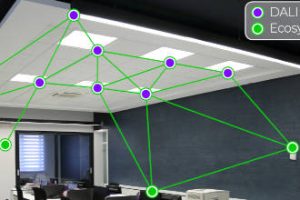EnOcean technology operates with a protocol developed by a firm of the same name. It communicates in the license-free 868 and 315MHz frequency bands and was developed specifically for harvested energy-powered transmitter nodes. It is already in many products including light switches that generate their own transmit power.
ZigBee Green Power will use IEEE 802.15.4 standard radios operating at 2.4GHz and “will work seamlessly with ZigBee and ZigBee PRO networks,” said the ZigBee Alliance.
Although the whole ZigBee ethos was to use minimal power – one year’s operation from two AA cells has been quoted – it was not designed from the ground up to run from harvested energy.
That said, Sheffield fabless chip firm Jennic has used its wireless microcontroller chip to demonstrate IEEE802.15.4, ZigBee and 6LoWPAN wireless sensor networks powered by vibrations, thermal gradients, light and RF energy.
“ZigBee Green Power, when completed, will connect devices using existing energy harvesting techniques,” ZigBee Alliance spokesman Kevin Schader told EW.
His Alliance sees ZigBee’s existing user base, largely open nature, and broad applicability as tipping the balance in its favour.
“Since ZigBee is a global, open standard using the internationally available 2.4GHz spectrum, we do not see any competition from proprietary technologies,” said Schader. “In addition, ZigBee has a variety of applications, or public application profiles that provide services specifically targeted for energy management, health care, home automation, commercial building automation and telecom services.”
Details of ZigBee Green Power have yet to be published so specific information on how much energy will be needed for each device is not yet available, but projections are expected by the end of the year.
EnOcean technology was always intended to run from scavenged power.
From 50µW a standard EnOcean wireless module can transmit 30m indoors and 300m in open space.
Duty cycle is 1% and data at 125kbit/s is sent in 1ms ‘telegrams’.
In addition to existing self-generating light switches and other modules, sensor profiles will be specified by its Alliance for interoperability.
“Our technical working group has now ratified the first EnOcean Alliance specification and it will be launching worldwide at the start of November,” EnOcean Alliance chairman Graham Martin told EW. “The EnOcean Alliance is also working within the IEC to have the EnOcean Standard adopted, ratified and released as a full international standard.”
The ZigBee Alliance dismisses “proprietary technologies”; so what is the EnOcean Alliance view of the ZigBee Alliance attempts to set up an energy harvested standard?
“We have taken note of the ZigBee Alliance announcement that it plans to develop ZigBee Green Power. We are delighted to hear that now also ZigBee sees the potential of wireless and batteryless energy harvesting solutions,” said Markus Brehler CEO and founder of EnOcean, the firm behind the technology. “As soon as ZigBee’s planned developments reach the market we will of course have to clarify the patent situation as we already have registered multiple patent families in the area of energy harvesting wireless technology.”
 Electronics Weekly Electronics Design & Components Tech News
Electronics Weekly Electronics Design & Components Tech News

what is maximum devices able to connect with EnOcean ?